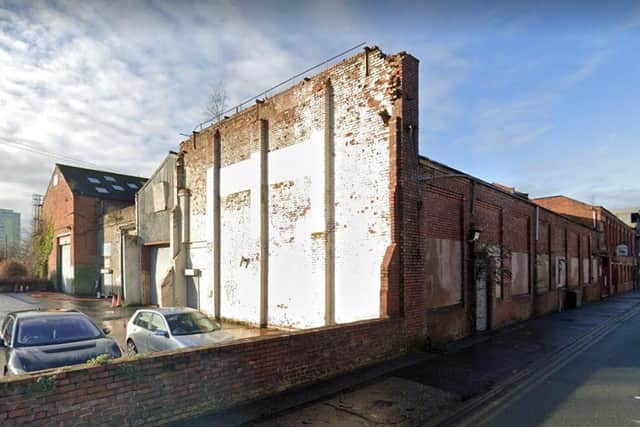Plan to place nearly 200 shipping containers on the edge of Preston city centre is rejected
and live on Freeview channel 276
The proposal would have seen the units installed for up to five years on land currently occupied by the soon-to-be-demolished Dryden Mill in the Stoneygate area of the city.
The plot – which is bounded by Manchester Road and Grimshaw Street – is part of a wider area earmarked for housing as part of Preston City Council’s city living strategy.
Advertisement
Hide AdAdvertisement
Hide Ad

Stoneygate Living Limited – the consortium behind the storage plan – is currently in pre-application discussions with the authority about developing several hundred properties on the site.
However, a meeting of the council’s planning committee heard that the storage proposal was designed to generate some short-term income from the land while the longer-term housing scheme was drawn up.
Alban Cassidy, the agent for the application, told committee members that the shipping containers were a “prequel” to the housing development – not instead of it.
“[The regeneration of Stoneygate] is a fantastic opportunity, but it’s also a marginal development opportunity. Therefore, every scheme is very much financially challenged, so the idea is to bring a steady income in [until the housing is developed].
Advertisement
Hide AdAdvertisement
Hide Ad“We have already got prior approval [for demolition of the mill], so the appearance of the [area] is going to be a cleared site in due course anyway.,” Mr. Cassidy said.
He added that the applicant had already demonstrated a commitment to the eventual housing development by spending over £100,000 on the ongoing pre-application process – and said that the storage facility would likely only be in operation for three years, rather than the five for which permission had been applied.
However, council planning officers recommended that the shipping container scheme be rejected, because it conflicted – in the medium term at least – with the authority’s city centre plan and its housing aspirations for the land in question.
The 189 containers, which would have been laid out in four rows, were deemed likely to cause only “negligible harm” to the setting of the nearby Grade II-listed Grimshaw Street School and the Seventh Day Adventist Church – but councillors were told that there were insufficient public benefits to the proposal to justify even that level of damage.
Advertisement
Hide AdAdvertisement
Hide AdPapers presented to the committee also noted that once the mill had been demolished, the church and school – currently only visible from Grimshaw Street – would be opened up, making them and the shipping containers “highly visible” from Manchester Road, Avenham Lane and Queen Street.
Committee member David Borrow said that the application for the storage needed to be “linked” with a future submission on the housing, because the latter element was not yet “nailed down”.
However, Mr. Cassidy said that it could be between six and nine months before the housing application was ready for submission – and claimed that having the storage facility approved in the meantime would take the pressure off that process and allow discussion between the applicant and the city council to continue “until we have got something that we are all comfortable with”.
He also proposed the use of hoardings to surround the site – advertising the future housing scheme – during the period it was being used for storage.
Advertisement
Hide AdAdvertisement
Hide AdHowever, committee members were told that while that possibility might have overcome concerns about the setting of the nearby heritage assets, it would not surmount the conflict with the council’s planning policy for the Stoneygate area of the city centre – and the plan was rejected.
Many thanks for reading. Please consider subscribing to the Lancashire Post to support local journalism and help secure its vital role across Central Lancashire - thank you.
Comment Guidelines
National World encourages reader discussion on our stories. User feedback, insights and back-and-forth exchanges add a rich layer of context to reporting. Please review our Community Guidelines before commenting.
